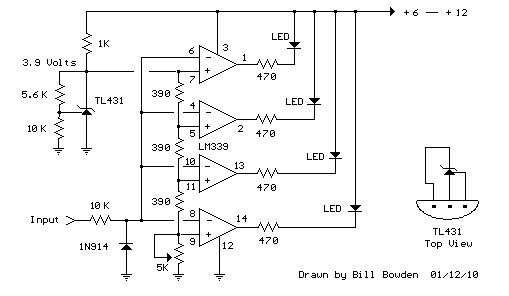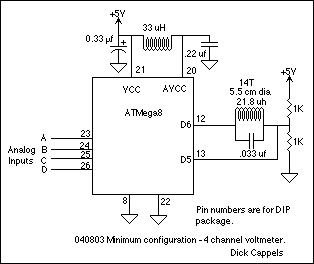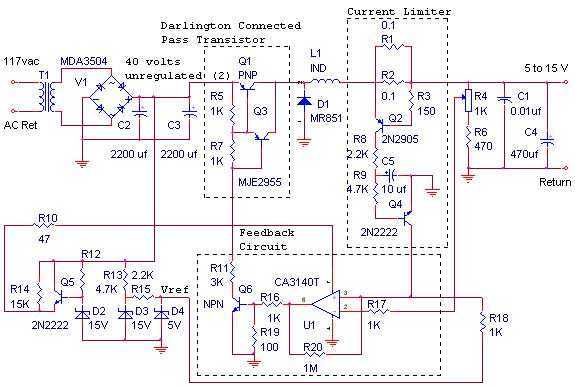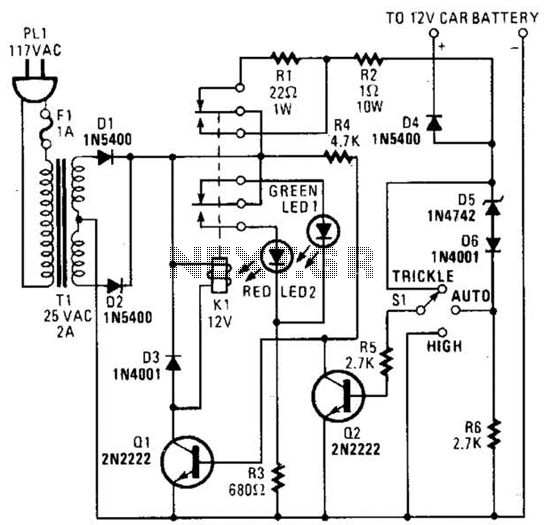
3 6 volt cell phone battery meter

This circuit is designed to display the voltage level of a standard 3.6-volt lithium-ion rechargeable cell phone battery using a 4 LED bar graph. The reference voltage is supplied by a TL431 programmable voltage source, configured to 3.9 volts through a connection to a 1K resistor. An adjustable 5K resistor is utilized to set the lower reference for the LED connected to pin 14.
The circuit operates by monitoring the voltage of the lithium-ion battery and translating this voltage into a visual representation through the LED bar graph. The TL431 acts as a precision voltage reference and is adjustable, allowing for fine-tuning of the voltage level that corresponds to the activation of the LEDs.
The four LEDs are arranged in a bar graph format, where each LED illuminates based on the battery voltage level. As the battery voltage increases, more LEDs will light up, providing a clear visual indication of the battery's state of charge. The use of the 1K resistor in conjunction with the TL431 ensures that the reference voltage is stable and can accurately control the activation of the LEDs.
The 5K adjustable resistor allows for calibration of the lower threshold, ensuring that the first LED lights up at the desired voltage level, which is critical for accurate battery monitoring. This feature is particularly useful for applications where the battery voltage needs to be closely monitored to prevent over-discharge, which can damage lithium-ion cells.
Overall, this circuit provides an effective and efficient means of displaying battery voltage levels, making it a valuable addition to battery-powered devices where visual feedback on battery status is essential.This is a similar circuit to the above and provides a 4 LED bar graph indicating the voltage of a common 3.6 volt Lithium - Ion recharable cell phone battery. The reference voltage is provided by a TL431 programmable voltage source which is set to 3.9 volts where the TL431 connects to the 1K resistor.
The lower reference for the LED at pin 14 is set with the 5K adjustable resistor.. 🔗 External reference
The circuit operates by monitoring the voltage of the lithium-ion battery and translating this voltage into a visual representation through the LED bar graph. The TL431 acts as a precision voltage reference and is adjustable, allowing for fine-tuning of the voltage level that corresponds to the activation of the LEDs.
The four LEDs are arranged in a bar graph format, where each LED illuminates based on the battery voltage level. As the battery voltage increases, more LEDs will light up, providing a clear visual indication of the battery's state of charge. The use of the 1K resistor in conjunction with the TL431 ensures that the reference voltage is stable and can accurately control the activation of the LEDs.
The 5K adjustable resistor allows for calibration of the lower threshold, ensuring that the first LED lights up at the desired voltage level, which is critical for accurate battery monitoring. This feature is particularly useful for applications where the battery voltage needs to be closely monitored to prevent over-discharge, which can damage lithium-ion cells.
Overall, this circuit provides an effective and efficient means of displaying battery voltage levels, making it a valuable addition to battery-powered devices where visual feedback on battery status is essential.This is a similar circuit to the above and provides a 4 LED bar graph indicating the voltage of a common 3.6 volt Lithium - Ion recharable cell phone battery. The reference voltage is provided by a TL431 programmable voltage source which is set to 3.9 volts where the TL431 connects to the 1K resistor.
The lower reference for the LED at pin 14 is set with the 5K adjustable resistor.. 🔗 External reference





